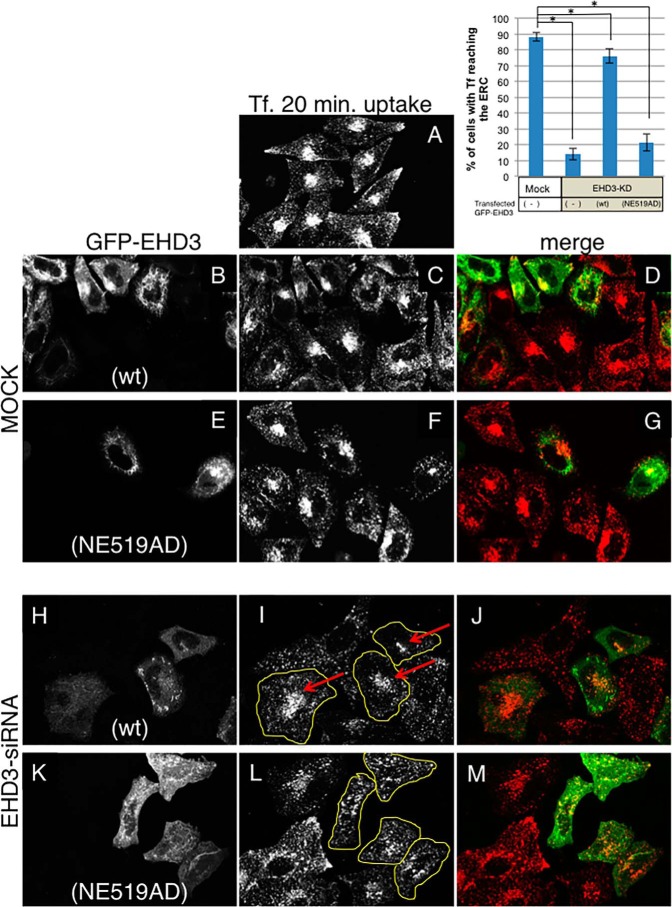FIGURE 6.
Wild-type EHD3, but not the EHD3 NE519AD mutant, rescues the impaired transferrin trafficking phenotype observed in EHD3 knockdown cells. HeLa cells were either mock-treated (A–G) or treated with EHD3 siRNA oligonucleotides (H–M) for 48 h. After the first 24 h, cells were transfected with either WT GFP-EHD3 (B–D and H–J) or GFP-EHD3 NE519AD (E–G and K–M) and then subjected to a 20-min uptake with Tf-568 prior to fixation and microscopic analysis. Mock-treated cells typically display accumulation of Tf-568 in the perinuclear ERC (A, C, and F). Upon EHD3 knockdown, Tf-568 failed to reach the ERC (I, non-labeled cells). I, wild-type GFP-EHD3-transfected cells are marked with a yellow border, and arrows highlight the rescued Tf-568 trafficking and arrival at the ERC. L, yellow borders indicate EHD3 KD cells transfected with GFP-EHD3 NE519AD. Arrows are not shown because Tf-568 does not reach the ERC. The graph (top right) displays quantification of the percentage of cells in which Tf reaches the ERC (within 20 min), comparing wild-type and EHD3 NE519AD-transfected cells. At least 50 cells from each treatment were scored from three individual experiments. Confirmation was done by “blind scoring.” Significance was assessed by analysis of variance. *, p < 0.01.

